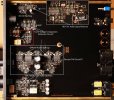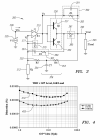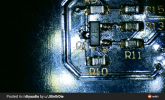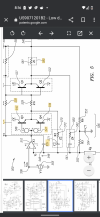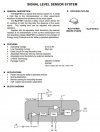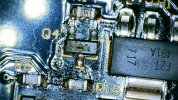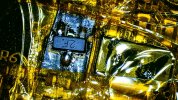With kind permission of the owner, I took apart the Massdrop THX AAA 789 headphone amplifier. If you have not seen it yet, check my my
review of Massdrop THX 789.
The internal structure of this unit follows other models from Massdrop. I was impressed with the effort to keep all the components on one side using mostly SMT (surface mount) parts. The bottom of the PCB is only through-hole pins which I am assuming was wave soldered.
Here is lower resolution shot of the PCB with my annotations:
View attachment 17795
Click on this attachment to get 4X higher resolution image.
View attachment 17796
I have 4X larger image yet again. Send me a message if you want that.
The biggest shock here is that there is no "THX module" of any sort! No custom or hybrid parts that I can see. Instead, we have a bunch of exclusively Texas Instruments parts. I have what I think is the sum total of it encased in white square, with a set of OPA 1602A op-amps providing the feed forward/low power output, augmented by pair of high power OPA 564 amps to drive larger signals.
With no custom or proprietary parts, the design is open to replication by Asian vendors.
The auto-off and power signals are in the top left part which I have zoomed in and shown beside it. There is an audio signal detector from JRC that allows them to automatically power the unit on and off based on whether there is music signal or not. And that dreaded logic for power on/off switch.
Fair number of relays are on the board. Interesting to see a pair of them by the RCA input signals. Do they shut them off when balanced input is in use?
The input stage is made up of a bunch of OPA 1602A op-amps. Curious to see room for two more relays there but only one populated. Likewise, there is room for two large electrolytic caps in the middle right that are missing. I don't see the need for them give total absence of any power supply noise but maybe you want to add them to make yourself feel better post warranty.

I see no hand modifications or soldering of any sort. This may have been behind the delays, with them turning the PCB multiple times to make sure it is fully automated assembly with no need for manual labor to fix things.
Here the links to various ICs used:
OPA564:
http://www.ti.com/lit/ds/symlink/opa564.pdf
View attachment 17797
TL062:
http://www.ti.com/lit/ds/symlink/tl062.pdf
View attachment 17798
OPA1602:
http://www.ti.com/lit/ds/symlink/opa1604.pdf
View attachment 17799
OPA564:
http://www.ti.com/lit/ds/symlink/opa564.pdf
View attachment 17800
JRC NJU7181:
https://www.njr.com/semicon/PDF/NJU7181_E.pdf
View attachment 17801
TI LM239:
http://www.ti.com/lit/ds/symlink/lm239.pdf
View attachment 17802
Conclusions
The Massdrop THX AAA 789 has a rather high quality and optimized mechanical and electronic design. Nothing jumps out at me to note as problem areas.
The big surprise is lack of any custom parts to implement the THX feed forward amplification logic. Instead, this is THX know-how, and design of a discrete amplifier using standard off-the-shelf ICs and parts. Even though they say they have patent protection, they have left themselves open to reverse engineering by the usual people. The core ideas behind feed forward design are 20+ years old anyway so any patents on the main idea have long expired. Not encouraging anyone to go and copy their design of course. They are not charging hardly any premium here so might as well get the real deal.
I hope the other experts on the forum study the details and chime in with what they figure out. I just performed a cursory look and have made little attempt at fully documenting the unit.
Overall,
a thumbs up for Massdrop THX AAA 789 from build quality.
------
If you like articles like this,
please consider donating using Patreon (
https://www.patreon.com/audiosciencereview), or upgrading your membership here though Paypal (
https://audiosciencereview.com/foru...eview-and-measurements.2164/page-3#post-59054). I need to feed our dogs as they constantly bark for more, reducing the amount of time I can put in reviews and articles!!!



